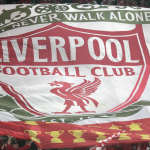FOOTBALL has its cycles, its periods of intensity and calm and to an extent success comes from how clubs manage them. That’s why form tables drawn across a calendar year always seem a little artificial, for that is simply not how the game functions and to compare performance over that parts of two seasons is to risk ignoring differences in the fixture list and in priorities.
But still, there is something striking about the fact that a Premier League table drawn up for 2019, shows Crystal Palace in fourth, a point better off than Chelsea and four better than Manchester United.
Even in the actual table, they lie sixth, ahead of both Tottenham and United. Instinct says that, even with so many of the big six being in states of transition, it’s unlikely that Palace can hang on to still be in the top six by the end of the season. Although they won at Old Trafford, they were punished for an oddly high back line and were demolished 4-0 by Tottenham. In their next five games they face Manchester City, Arsenal, Leicester, Chelsea and Liverpool, will perhaps give a truer picture of Palace’s quality.
Roy Hodgson’s Crystal Palace face #MCFC this weekend.
If Palace win they will overtake City into 2nd pic.twitter.com/PEbHy6EUGt
— Dijkinho (@Dijkinho) October 15, 2019
But in a sense even if they lose those five games, it doesn’t much matter. Palace will still be around midtable and, for a club that has finished in the top half of the top flight only three times in their history, that is still encouraging. That said, Palace’s wage bill for 2017-18, the most recent season for which all figure are available, was the eighth-highest in the league, lower than the big six and Everton, but higher than, say, Leicester, West Ham and Wolves. It may be that their ambitions should be a little higher than simply avoiding relegation.
Even with that caveat, and the fact that only Liverpool and West Ham are overperforming their xG as much as Palace, their form over the past 10 months has been impressive. They are defensively solid, having let in only eight goals, four of them in that one game against Tottenham. Over the past year, they have begun to look a proper Roy Hodgson side, well-drilled, organised and defensively solid, with just enough attacking instinct to take advantage when opponents overcommit.
Wilfried Zaha, obviously, is the main creative focus, but the idea of Hodgson as relentlessly, dogmatically negative is misleading. Patrick van Aanholt, for instance, is encouraged to get forward from left-back – and it says much both for Palace’s ambition and for the United’s loss of aura that he felt empowered in the final minute at Old Trafford to surge forward to score the winner.
Hodgson has done this before, of course, both with West Brom and Fulham. The temptation, based on his uninspiring spells in charge of Liverpool and England, is to see him as some sort of dinosaur, an old-school English footballing man, but he has always been rather more than that. He was, after all, broad-minded enough to set off in the seventies to seek his fortune in Sweden. Six league titles at three clubs in two countries is no mean achievement.
Crystal Palace away wins under Roy Hodgson during the past 12 months:
✅ West Ham
✅ Man United
✅ Cardiff
✅ Arsenal
✅ Newcastle
✅ Leicester
✅ Wolves
✅ Man City pic.twitter.com/pRIIpQNHin— Football Geeks (@geeks_football) October 9, 2019
The question then is why his spells with both Liverpool and England are seen as such failures. With England, perhaps, it’s to an extent in the nature of the job. No manager leaves it with their reputation enhanced – at least not in the short term. Hodgson was arguably doing well enough until a sudden and unexpected tactical switch shortly before the 2014 World Cup, which began a downward spiral that culminated in defeat to Iceland.
But there is also perhaps something with Hodgson’s method. He works players relentlessly, practising defensive shape so frequently that even those players who like him accept training was often boring. The very highest level of players, perhaps, resent that, particularly when the style being imposed is counter-attacking. Certain managers, perhaps, work best with a certain type of player – no matter how great a manager is, he may not be a great manager for everybody.
Hodgson, at leats these days, perhaps isn’t equipped for the highest level. One level down, though, with the sort of players he has at Palace and had at Fulham and West Brom, his methods can be highly effective. In 2008-09 Hodgson took Fulham to seventh – and that perhaps can be a realistic target for Palace this year.



